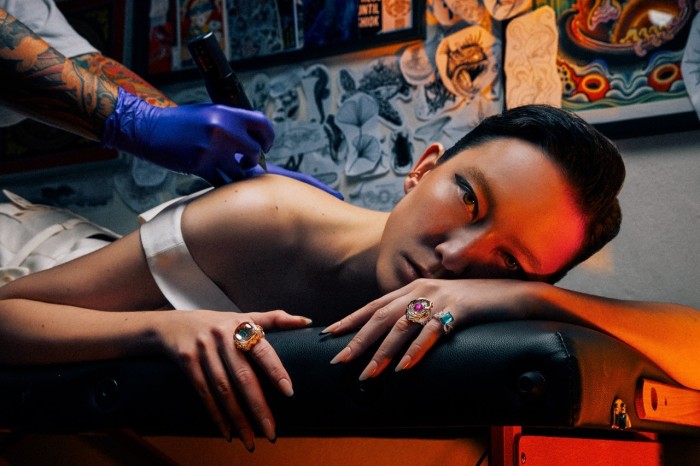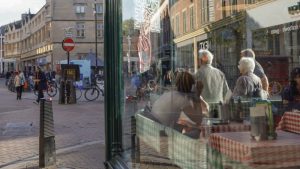How Singapore became a magnet for independent jewellers

In a quiet street opposite Singapore’s Peranakan Museum, in a white art deco building, is the boutique of Singapore jeweller State Property. The business is owned by husband-and-wife team Afzal Imram, an industrial designer, and Central Saint Martins-trained jeweller Ruiyin Lin. They founded it as a local fine-jewellery brand, and it is one of the few with an international profile, thanks to expansion into North America.
Across town, in a high-rise block, is the very discreet showroom of Simone Jewels, which was established 18 years ago by Malaysian-born Simone Ng. In 2020, she became the first Singapore jeweller to be stocked in London department store Harrods and has retail clients in Paris and the US.
She is better known in Singapore and around the region, though, for her one-of-a-kind artistic high jewellery. Her colourful masterpieces are inspired by her love of history and architecture — currently the palaces of Istanbul — and, last year, she debuted a gender-neutral collection called Tattoo with symbol-shaped pendants and cocktail rings.
And what they all show is that Singapore has no shortage of creativity or high-spending clients to support a local jewellery industry — even though the island state is not a big manufacturer, like Hong Kong or Bangkok.

“Most things in Asia are generally mass-produced and creating one-in-the-world pieces is one of the reasons why we started the brand,” says Ng. “In Singapore, customers are well-versed and sophisticated in their jewellery purchases.”
The island may be small, but there are different types of jewellery markets, Ng explains. “Some like [their jewellery] simple, some like it large and luxurious, and others would only buy into luxury brands,” she says.
The city is the major shopping destination for the region, with many international luxury brands in the malls lining Orchard Road. Ng estimates 45 per cent of clients for her artistic masterpieces and bespoke designs are from elsewhere in south-east Asia, while 50 per cent are Singaporean and 5 per cent are from the rest of the world.


Self-purchasing women are the core clientele for most of the city’s jewellers. “We’ve got quite a number of bankers, doctors, and we’ve noticed recently more C-suite ladies and entrepreneur clients, [including] some from the cryptocurrency world,” says State Property’s Imram. The majority are Singaporean, but customers fly in from Indonesia and the Philippines, he adds. Local clients are quite brand-driven, so they start their collections with Cartier, Tiffany & Co and Bulgari, Imram says. “But we’ve seen a growing acceptance of local, independent labels, like State Property,” he notes.
As a brand that now has around a dozen retailers in North America alone, State Property has learnt to tailor its approach to diverse tastes. “The different lifestyles, spending habits, weather, even . . . the different sizes of people, this makes us pay closer attention to the nuances of each of our clients across markets,” Imram says. It allows the brand to break out of a narrow creative perspective and “helps us design better”, he adds.
State Property’s modern art deco aesthetic is inspired by the blueprints of historic gardens. It combines gold, emeralds, diamonds and black enamel for bangles, earrings, pendants, a three-finger-spanning ring, and — always — signet rings (a favourite with clients). The majority of its American clients have slightly different tastes to those in Singapore, however. “One thing we hear from everyone is how the quality of our products is top-notch, which is something I have to thank our discerning Singaporean clientele for,” says Imram.


The relatively small society of an island state has given rise to a tradition for bespoke design, from restyling jade and family heirlooms to making something exclusive and unique. In Chinatown there is Madly (which has satellite boutiques in Munich and Dubai) where clients choose from colourful gemstones and commission bespoke designs, mostly rings.
In the gentrified Tiong Bahru enclave is Calla Lily. Founded five years ago by Emily Tan, who previously worked with Jimmy Choo and Marni before graduating from the Gemological Institute of America, it creates vibrant, contemporary bespoke jewels. “Bespoke has always been a natural inclination for me as it allows me to explore different looks and styles,” Tan says of designs that are inspired by the personalities and dreams of her clients.
“The local market highly values one-of-a-kind pieces, giving us a competitive edge, and the rarity of certain gemstones also makes large-scale production difficult.”
Budgets vary wildly, she says, “from S$2,000 to S$5,000 [$1,500-$3,000], but they can go up to S$100,000 and more, depending on the gemstones we source”. Singaporean women feel very safe moving around the city wearing thousands of dollars’ worth of jewellery, Tan notes, so they can enjoy their jewellery without having to wait for a special occasion — which “often leads them to return for more unique designs”.
While Singapore attracts big luxury brands, it has also been a draw for independent jewellery designers. Two years ago, Nadine Ghosn relocated to Singapore, having lived between Paris and London. “I wanted the experience of living in a new place that has great positive energy and [2022] was the time to do it,” she says. “I love Asia, the speed, the safety and the family vibes of Singapore.”
She has found a ready market for her quirky jewels inspired by everyday items such as Lego, crayons and bicycle chains. “I’ve found locals and new Indonesian and Thai clients open to something different, colourful, fun and customised to their preferences,” Ghosn says, citing her gold Pencil and Crayon bangles and rings, and the stackable Veggie Burger rings, as bestsellers. “I think they appreciate the tongue-in-cheek and unexpectedness of my designs.” Clients start with one piece and return for more. “It has definitely been my most rewarding move so far,” she says.
#Singapore #magnet #independent #jewellers




